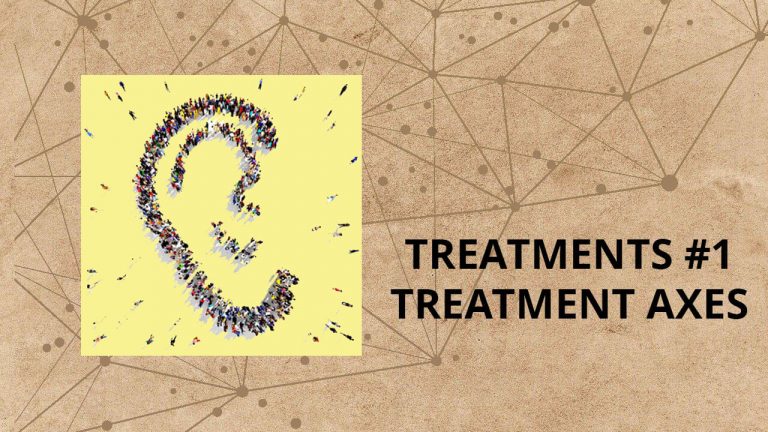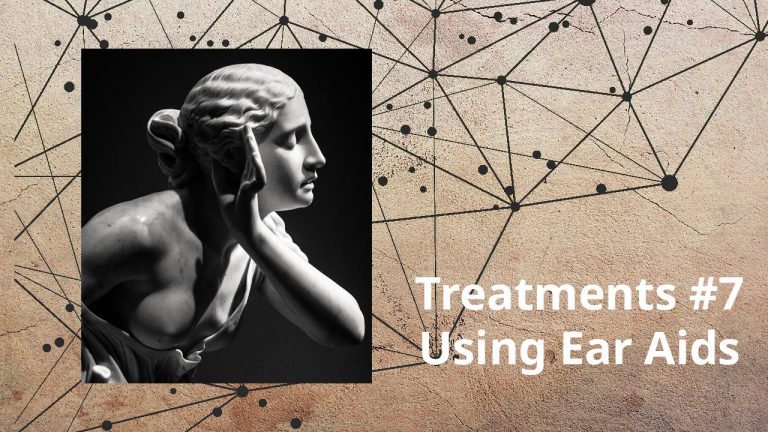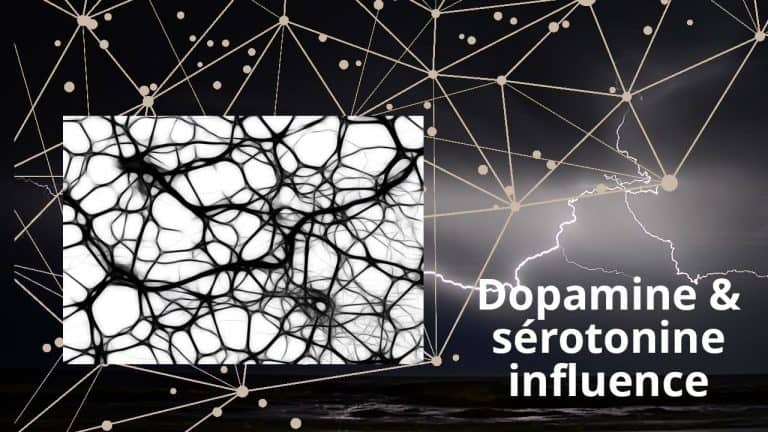Treatments Axes
Introduction.
The cause or causes of tinnitus can be very diverse and often difficult to identify.
This logically results in a wide variety of treatments axes.
It will of course be possible and probably advisable to combine several of them.
In this article we will try to review them comprehensively but without going into too much detail of the different existing paths.

Treatment Axes – To Do First.
Consult a specialist.
As a hearing disorder, it is normal and logical to turn first to a specialist.
There are many diseases and causes of malfunctions in our hearing system, which we will not review here. It is of course the role of the doctor to identify and treat them!
The specialist will be able to diagnose if this is the case a clearly identified pathology or external cause.
It is then referred to as tinnitus with causal pathology or objective tinnitus.
By treating the case, we will logically treat its consequences.
Unfortunately the objective tinnitus concerns only about ten percent of cases.
In any case, the diagnosis and advice of a specialist is invaluable.
He will be able to direct you towards one or more of the paths that we will discuss.
Its equipment can also be used to identify a hearing loss problem that could lead to tinnitus.
Thus an audiogram will give you an image of the response of each of your ears over the entire range of audible frequencies.
We strongly recommend that you consult!
Improve your lifestyle.
Also it may seem obvious.
But from the point of view of the treatment of an unbiased tinnitus, the cause of which cannot be clearly established, nothing should be neglected.
• Alcohol, tobacco, and in general all the exciting are to be limited or prohibited.
• Chronic diseases such as diabetes or hypertension should be treated.
• Regular physical activity can only be beneficial.
• Stress is recognized as an aggravating factor of tinnitus, we must try to avoid stressful situations as much as possible. In this perspective, a quiet life in the countryside is probably more favorable than the city.
Improve the quality of your sleep.
Is tinnitus keeping you up at night?
Or on the contrary a sleep of poor quality that nourishes and promotes tinnitus?
There are certainly both, in varying proportions according to the people.
It is then a question of trying to improve the sleep, hoping then an improvement of the tinnitus which goes in turn …
There are conventional sleeping pills, but they have several disadvantages: risk of addiction and also reversibility, that is to say that the problem starts again as soon as the treatment is stopped.
We advise instead to see the side of Melatonin, which is called the sleep hormone,and has the advantage of being a naturally synthesized element by the body.
It is risk-free and easily available at an affordable price.

Treatments Axes – The Audio Methods.
Treating a hearing problem with an audio solution makes sense.
Various techniques have thus been developed for several decades.
Sound therapies include the use of music, white noise generators, using hearing aids or not.
Potential mechanisms through which sound therapy may act involve masking, habituation, and reversing of cortical reorganization through lateral inhibition.
Notched Audio Therapy.
Notched audio Therapy’ is the most promising method.
It was developed in Germany, and field trials in Germany and Italy showed a significant improvement in the perception of tinnitus in about 75% of the treated subjects.
It is effective on tonal tinnitus, which is by far the most common.
Treatment begins with an identification of the tinnitus.
Different types of custom sounds will then be proposed to you.
They have the particularity of being ‘filtered’, that is to say that the energy of the sound wave has been eliminated around the tinnitus frequency: the process is also called notch.
Regular listening to these calibrated sounds will lead to a reorganization of the circuits of neurons responsible for tinnitus. The term neurological unlearning can be used here.
Simple to implement and inexpensive, this method nevertheless requires a minimum of daily practice over a certain period of time to be effective.
Acoustic Coordinated Reset (ACRT) Therapy:
This method is like the previous one based on the principle of neuroplasticity, that is to say the possibility of changing the neural circuits of the brain.
Close to the Notched Audio Therapy it uses a complex calculation mode to determine the frequencies of the sounds that will be played.
These sounds are also mathematically related to the frequency of tinnitus.
The Tomatis method
It owes its name to its designer, the French doctor Alfred Tomatis.
It is defined as a natural approach to neurosensory stimulation.
The therapy is based on the relationship with a licensed professional (more than 2,000 centres worldwide) and the use of a portable home device called TalksUp®.
Rather, this method is intended to treat attention disorders, learning, coordination and autism.
Functional sound therapy
This method starts from the somewhat strange assumption that the different proteins have a musical sensitivity.
And so that certain note sequences would allow to modulate the protein synthesis at the peripheral level of the inner ear.
This certainly interesting technique still needs to be scientifically substantiated.
We are now interested in several other musical therapies that have in common to offer listening to noises masking tinnitus. This involves gradually undressing the areas of the brain responsible for the problem.
Residual inhibition:
This method intended to act in a punctual manner proposes to play on a short duration a sound of frequency identical to that of tinnitus. It is therefore a matter of masking it and inducing a response from the brain that will then tend to ‘be silent’.
A short or very short-term improvement is noted in some people.
But even when it works, the fundamental problem remains.
The use of a noise generator.
White noise is a sound which has at equal intensity all the frequencies humanly perceptible. Sounds like a sizzling radio.
Other noises, with different physical characteristics, are also used for therapeutic purposes. Let’s mention brown noise and pink noise.
Daily listening to these different so-called therapeutic noises could help tinnitus victims to distance themselves from the phenomenon.
This technique can be set up with or without hearing aid.
Tinnitus Retraining Therapy (TRT)
Developed in the UK, that method is built on two aspects:
• a psychological aspect involving several sessions of explanation and adaptation with a professional.
• and listening, via a hearing aid or not, to a continuous sound in order to avoid silence. This long therapy (up to two years) also uses a noise generator.

Treatments Axes – Others.
The Drug Treatments.
These are mainly antidepressants and anxyolitics that will affect the level of stress or anxiety due to tinnitus – or other causes!
They can bring some improvement in the short term. But since they do not address the real cause or causes of the problem, they generally do not provide a real solution.
It is also important to take into account for some of them undesirable side effects, not to mention the risk of addiction.
We must therefore consider them as a temporary “comfort” solution, to be handled with care, and always for a limited time.
However, we will give a special place to anti-epileptics.
Used at low doses, they seem to give interesting results. We plan to focus the spotlight on this method by devoting a full post to it soon.
Treatment with supplementation
This is to remedy with one or more dietary supplements any deficiency problems that could affect hearing.
Before considering the treatment of possible deficiencies in the diet, we must work to have a healthy and balanced diet to avoid these deficiencies.
Provided of course to respect the recommended dosages, this type of treatment does not present risks.
So one can be tempted to put the assets on one’s side by proceeding in a reasonable way to well-targeted contributions.
Gingko Biloba, but also vitamin B12 are the most renowned for their positive action against tinnitus.
Other examples include Magnesium, Zinc, Lecithin… Non-exhaustive list.
So-called natural or alternative treatments.
Chosen by affinity or why not combined with each other, this type of therapy provides help that can range from simple wellness to real healing. An advantage of these alternative pathways is that they generally do not have an undesirable side effect.
So why not try?
It is probably for this reason, but also because of their accessibility, and their low cost, that these alternative solutions appeal to an ever wider public.
Here is a (non-exhaustive) list of the main natural or alternative treatments available to date, often from Asia.
Yoga, meditation, tai chi, shiatsu, zen … Mixing physical and mental practices, all these techniques will influence the level of stress, which can only be beneficial.
The Sophrology
Sophrology consists of a set of techniques for relaxation, breathing, body movements, muscle relaxation and “visualization” of thoughts.
The goal is to get the patient to focus on his positive thoughts and feed on them to move forward in life and get to know each other better.
The term Sophrology refers to a mixed discipline at the crossroads between hypnosis, meditation and relaxation techniques. It is here a question of gradually bringing the mind to consider tinnitus in a less negative way..
However, sophrologists are not doctors. They do not have the authority to provide treatment or even make diagnoses. In this, they do not replace the psychiatrist, the general practitioner or any doctor, alone able to detect the presence of a disease and to deliver treatments. On the other hand, sophrologists may come in support of a ‘traditional’ treatment.
Cognitive and Behavioural Therapies (CBT)
Historically, they were developed in the 50s/60s to treat anxiety and depression.
They propose a treatment philosophy close to sophrology.
The aim here is to address emotional mechanics through behavioural techniques.
The patient himself must develop mental automatisms to improve his perception of tinnitus and its consequences.
The negative thoughts and reactions associated with the presence of tinnitus will gradually diminish.
This requires time but especially personal involvement.
You have to believe in it to make it work.
Laser treatments
This method developed in Switzerland proposes the use of a low frequency laser to treat tinnitus.
The device can be used without professional assistance.
Several studies carried out under real conditions in different countries have obtained conclusive results.
We also plan to devote an exhaustive post to this method, which is a bit expensive but promising.
Cochlear implant:
It’s a heavy technique that requires surgery under general anesthesia.
It involves implanting inside the ear an electronic module connected to the auditory nerve beam, This module will be coupled to an external hearing aid.
The whole will be able to bypass the cochlea by addressing directly to the brain.
This technique, rather reserved for cases of severe deafness, is also used to treat tinnitus.
This review is now over.
In the next post will are going to explain everything you need to know about frequencies and decibels.
Stay connected!




